I have written in the past about “passion projects,” which is a term I use to describe first-time projects in a new medium that were executed by people with little or no training, and often executed in an explosive or emotional way after wanting to do something similar for years.
Dr. Rolando Jose ‘s Doraemon Mosaic seems to have been such a passion project, and my first mosaic definitely was one.
Well, artist Kevin Pawlowski just emailed us some pictures of his second mosaic, and it is a doozy to say the least. Kevin’s The San Damiano Crucifix Mosaic is a large sculptural mosaic icon, and it is even more impressive than his first mosaic Be Not Afraid, which is a skillful and original interpretation of one of Gustav Dore‘s classic Bible engravings, Jesus Walking on the Sea.
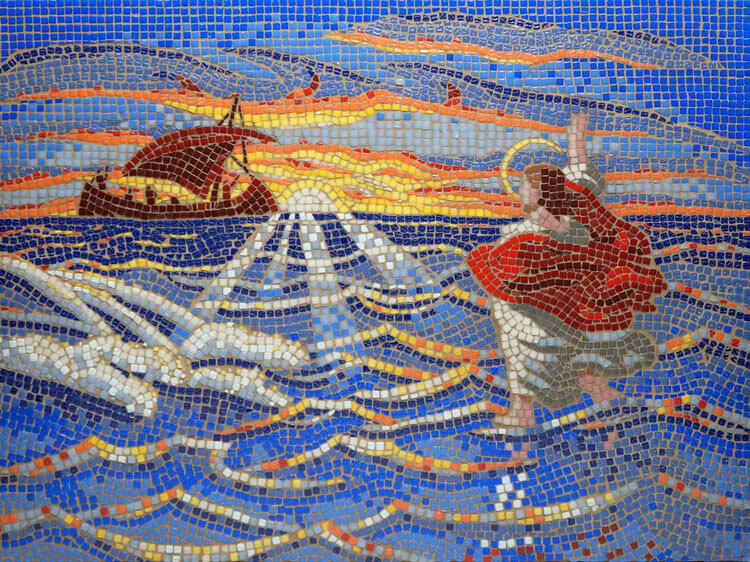
Jesus Walking on the Sea
I think the genius of Kevin’s first mosaic is that it does not try to copy the lines of a 19th century engraving with its hyper-realistic crisp drawing of wind and cloud, or the lighting of the sky, or even the mood of the scene, but it does make great use of Dore’s iconic figures and placement.
And speaking of mood and the need to make it different: Dore was creating an illustration, and could depict the threatening gray storm at the moment of drama. Kevin was creating an icon that had to incorporate the light and hope of the story of as a whole.
Picasso said that all artists borrow but great artists steal. There is a difference, and Kevin understands it.
Most people starting with such a dramatic and well-executed work of art as a model would have unable to do anything but be a slave to it or lose the original entirely. It’s difficult to use genius as a starting point unless you yourself have the technical horsepower to understand the original in terms of what makes it work and why and to take what you need and only that.
These are just some of the reasons I think Kevin’s first mosaic is impressive. Make sure you also check out the different ways Kevin creates visual interest all throughout the mosaic, including texture obtained by mounting tiles upside down so that their embossed bottoms show.
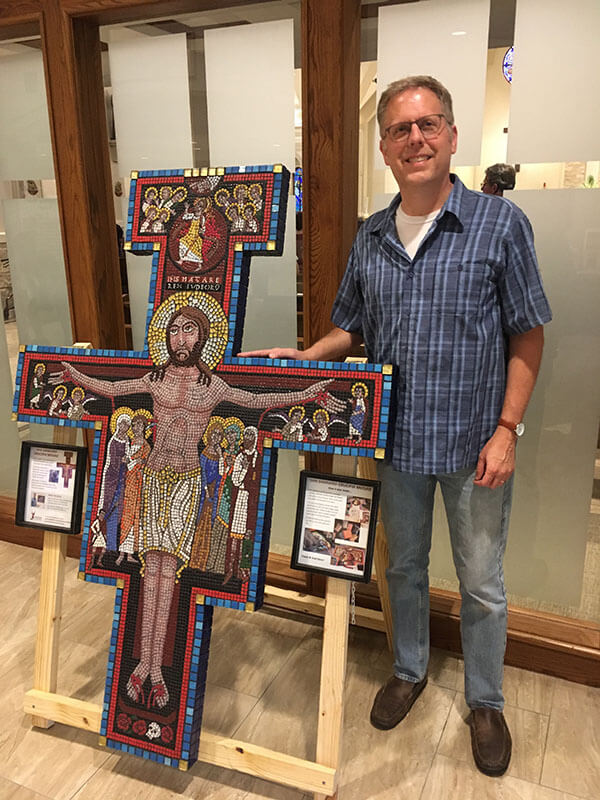
San Damiano Crucifix Mosaic
The San Damiano Crucifix or the “St. Francis’ Cross” is a crucifix that was painted in the byzantine style in the 12th century. It was originally located in the crumbling old church building where St. Francis was when the Lord commanded him, “Francis, repair my Church.”
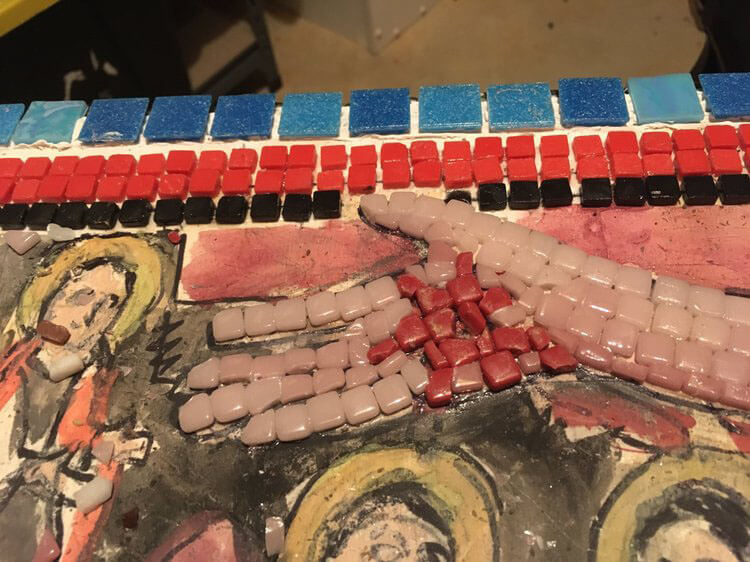
In his blog, Kevin does a good job discussing how he translated the image into tile and how he created the mosaic, including building the base and grouting the finished work.
In the photo above, note how Kevin has colored the cartoon with thin washes of color. Keep in mind that if you mosaic directly on a surface, and you decide to color your cartoon, make sure you test the compatibility of the paint and glue by gluing a tile on a scrap piece of painted backer and pulling it off 48+ hours later. Use thin watercolor washes that leave the texture of the backer exposed.
I discourage mosaicing on painted cartoons as a general rule because the paint is an additional layer (and thus a point of failure over the years), but Kevin’s thin watercolor washes look like they would be fine.
If you think you need a painted cartoon, consider working indirectly by placing contact paper sticky-side-up over your pattern. It’s actually quicker and easier than working directly. Then you pick it up with mosaic mounting tape and gluing it down all at once.
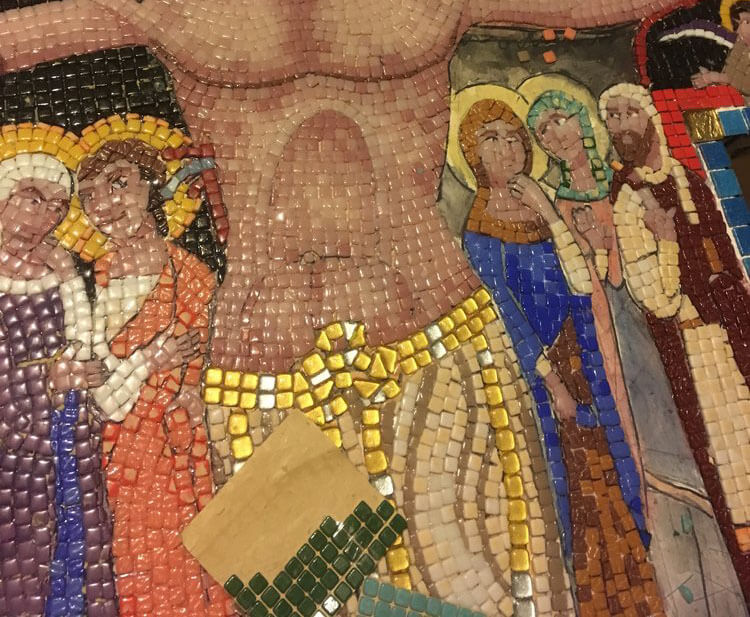
Tiny Faces
There is something Kevin wrote that makes me laugh out loud every time I think about it:
In planning the work for this mosaic, Kevin decided that he should have the Latin inscription spelled out using specially-made letter tiles because he thought that rendering the letters in mosaic might be particularly difficult compared to the rest of the work.
Anyone who has ever had to create a small face with relatively large tiles is painfully aware of how difficult that can be. Kevin’s mosaic is filled with tiny faces, making the project something of a tour de force.
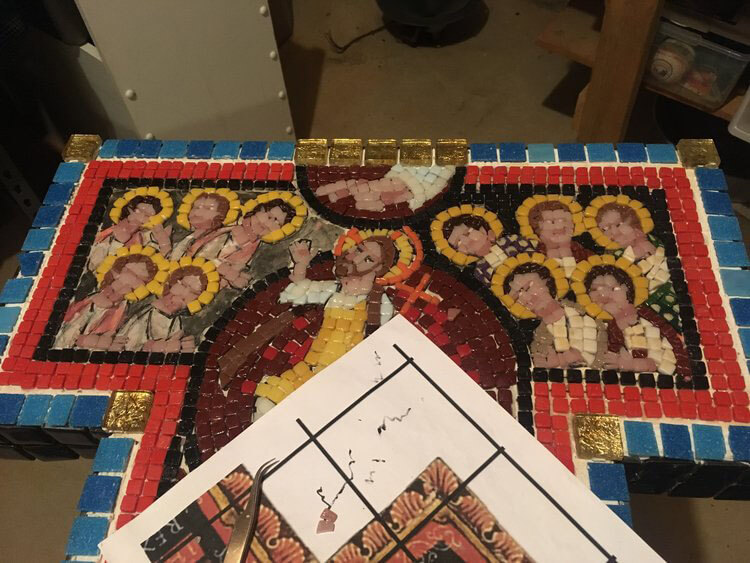
A Passion Project
Why am I laughing? The man was sufficiently new to mosaic to think letters would be more challenging than small faces, but his passion for what he was doing meant that he rolled over the much more difficult task.
For me, that story is what makes this mosaic a passion project, even though Kevin is a no amateur and has probably worked with visual communication or different aspects of commercial art for years.
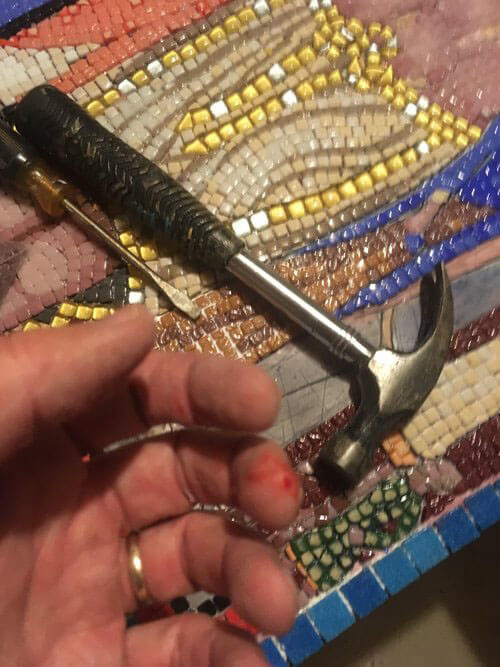
Has there ever been a mosaic ever made that didn’t have some blood spilled in it?
I look at all those tiny faces, and I’m sure Kevin bled making each one. Tiny slivers of glass are routinely sharper than steel razors can even be made in a lab, and manipulating the usable pieces into place is an act of love and patience.
For me, what it took to make those faces means that this mosaic is as bonkers as me out in the parking lot chipping tile with a hammer and screwdriver for my first mosaic.
Art Happens
My first mosaic? In spite of having an industrial engineering degree and having designed hand tools myself on the job, I suddenly found myself in the parking lot behind my apartment building chipping ceramic tile with a claw hammer.
It was as if my rational mind was suddenly and completely overwhelmed with the desire to create the vision in my head, and things like inefficiency and time were completely irrelevant. It did not matter in the slightest that I was working in the most clunky way possible and cutting my fingers to shreds.

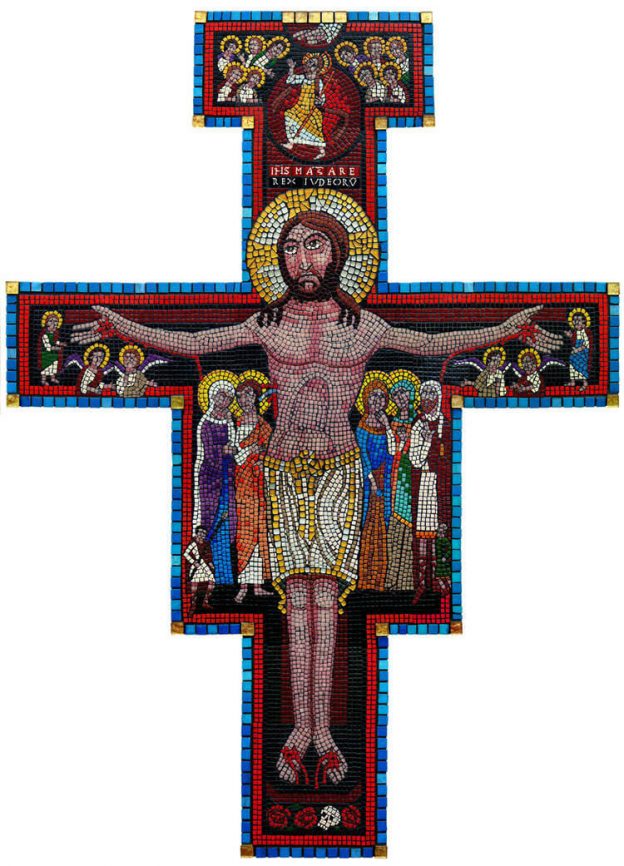
Leave a Reply